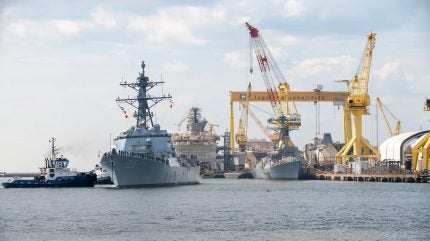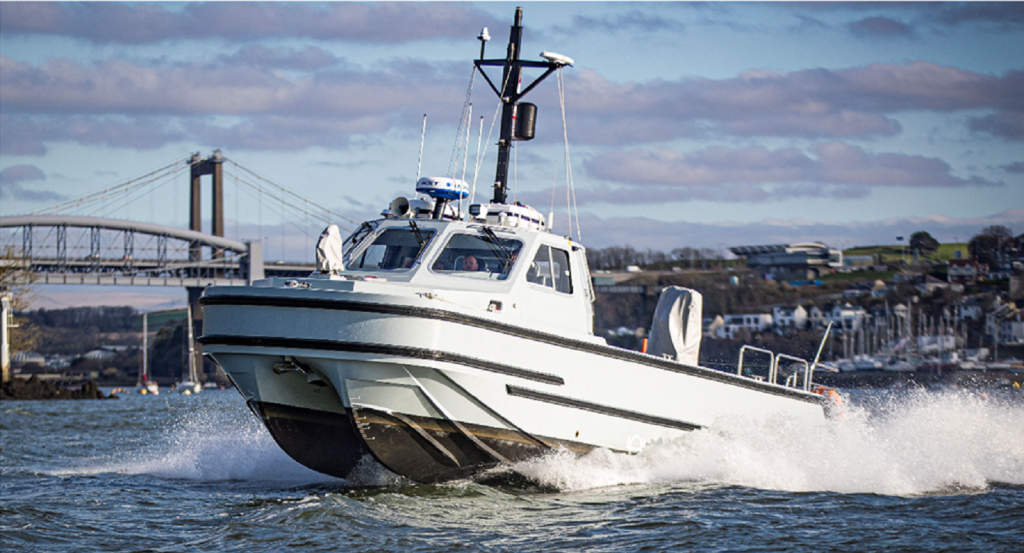
RTX business Raytheon Missiles & Defense has been awarded a $677m contract for the continued production of AN/SPY-6(V) family of radars for the US Navy, with a 7 June 2024, contract notice by the US Department of Defense (DoD) detailing that work was due to be completed by September 2028.
The award was fixed-price incentive modification to a previously awarded deal for AN/SPY-6(V) production, a radar type widely utilised by the US Navy, with the service committing legacy shipbuilding and conversion funding from as far back as FY2020 to the latest modification.
US Navy FY2024 funding to the amount of $303m accounted for 45% of the total commitment.
A 10 June RTC release stated that the award is the third option exercised from the March 2022 hardware, production and sustainment contract that is valued at up to $3bn over five years.
Under this contract, the US Navy will receive seven additional radars, increasing the total amount of radars under contract for procurement to 38 units.
The US Navy is integrating the SPY-6 naval radar into its surface fleet beginning with the Arleigh Burke-class guided missile destroyer (DDG) USS Jack H Lucas (DDG 125), which was commissioned in October 2023 and is the first of the new Flight III variants.
The San Antonio-class amphibious platform dock USS Richard M McCool Jr (LPD 29) is the second ship and the first to deploy the (V)2 variant. LPD 29 was delivered to the US Navy in April 2024 following completion of builder’s and acceptance trials in the Gulf of Mexico.
Raytheon states that the SPY-6 family of radars is projected to be deployed on 65 US Navy warships over the next decade, indicating a requirement for dozens of additional radars in future DOD contract notice modifications.
Flight III and its AN/SPY-6(V) core
The Arleigh Burke-class DDG series first entered service with the US Navy in 1991, and has since been upgraded to the Flight II, Flight IIA, and now Flight III iterations.
Central to the Flight III is the new AN/SPY-6(V) radar which will enable to variant to perform anti-air warfare and ballistic missile defence simultaneously, a critical element in the US Navy’s surface combatant Integrated Air and Missile Defense capability.
According to the US Navy, DDGs 51-71 represent the original design and are designated as Flight I; DDGs 72-78 are Flight II ships; and DDGs 79-124 and DDG 127 are Flight IIA ships. The Flight III baseline begins with DDGs 125-126 and continues with DDG 128 and subsequent vessels.
However, The early service of the USS Jack H Lucas (DDG 125) looks to have been hampered, with a September 2023 DoD contract modification for the accomplishment of a post-shakedown availability (PSA) process for the newly commissioned warship.
Work on the PSA contract modification for DDG 125 was expected at the time to be completed by October 2024, a full year after the vessel is scheduled to be commissioned into USN service.
According to the Navy League of the United States (a non-profit, civilian, educational and advocacy organisation) a PSA is “an industrial activity availability assigned to correct deficiencies found during the shakedown cruise or to accomplish other authorised improvements”.
This definition is also used by the Federation of American Scientists, which in its guide on US Navy PSA doctrine, states that a PSA deficiency correction period will be “scheduled after Sea Trails and prior to PSA completion”, with the scheduled length of the correction period “determined by the type and magnitude of the remaining deficiencies”.







